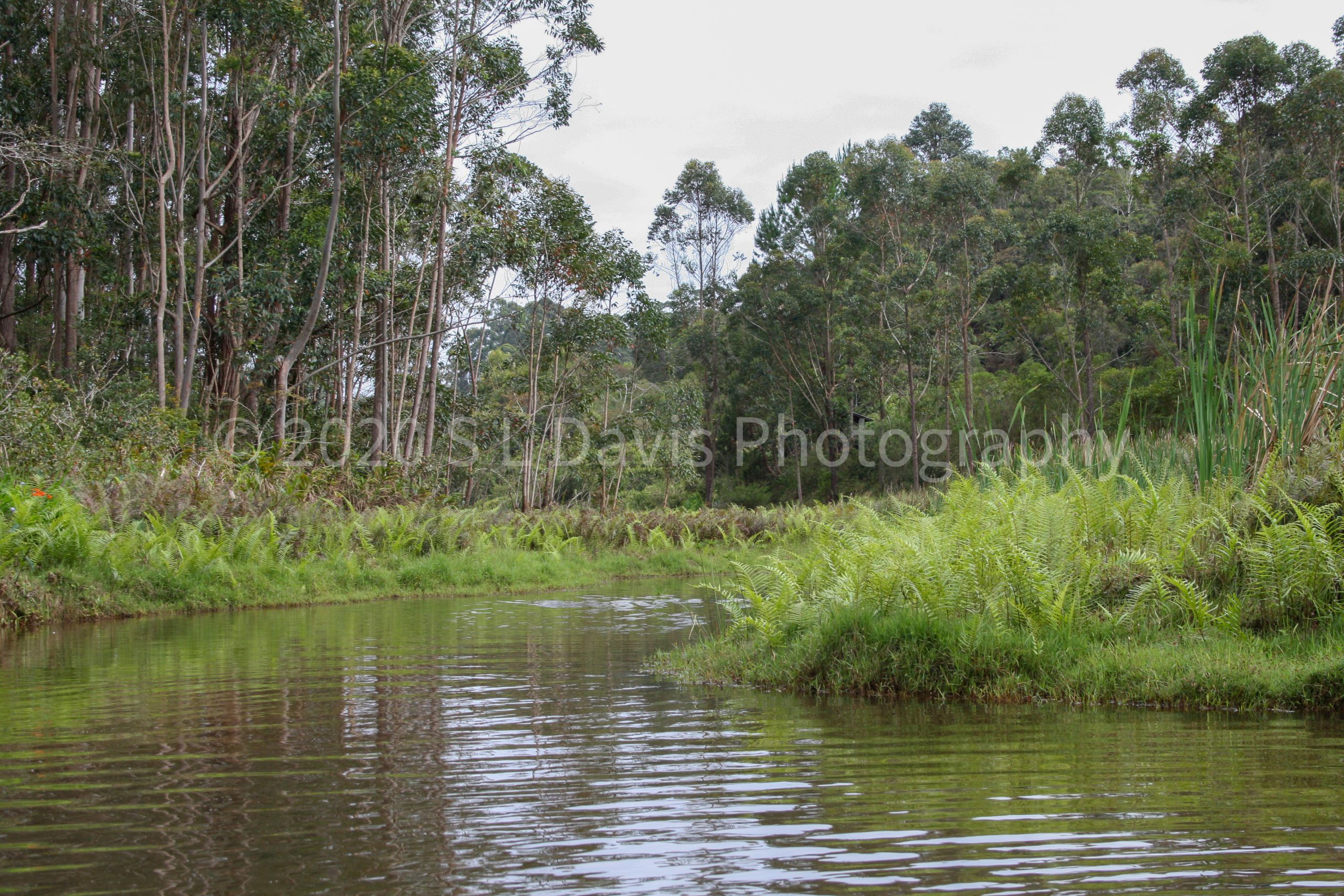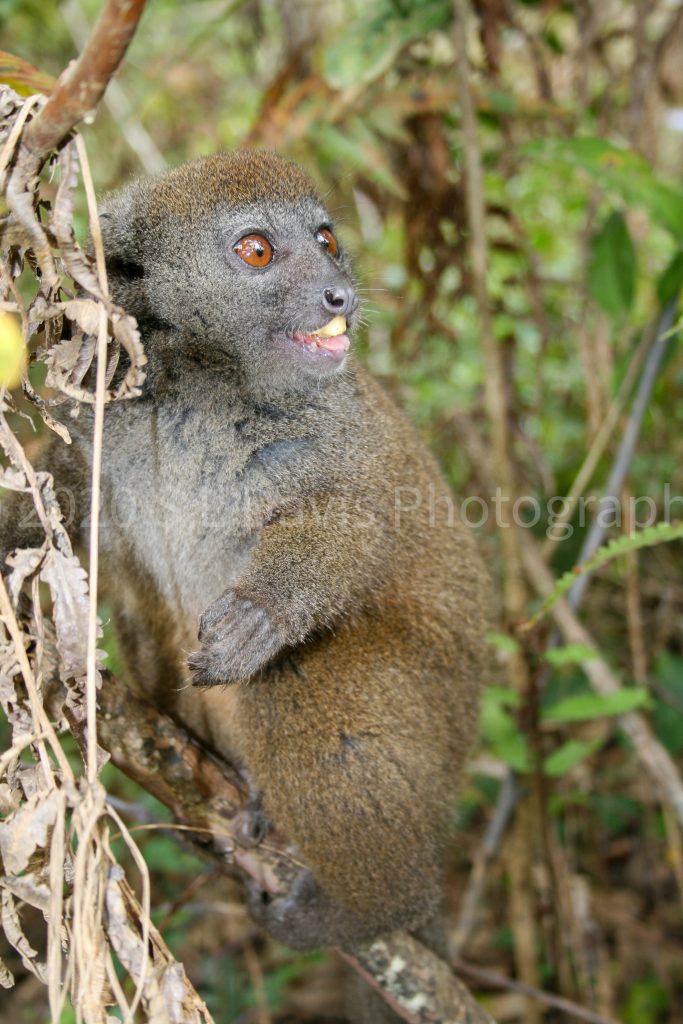
The following morning, I was driven to a place just outside of Vakona where there is an island called “Lemur Island”. Lemur Island is a project that exists to rescue lemurs, who have been taken from the wild with the sole purposes of exploitation by the captive wildlife trade and or illegally kept captive as pets. As they have been kept captive and influenced by humans, they are not able to be fully released into the wild as this would now pose a greater risk to their survival. Various different species of lemurs are kept on this island and whilst they are looked after, protected and are free to roam, it is designed so they are unable to leave this sanctuary. There isn’t much information on the research conducted on this island or about the island in general, other than what is experienced by those who have knowledge of it and have visited. What I can tell you is, they do rely on tourist donations in order to continue with their work to protect these vulnerable primates. It is illegal in Madagascar to keep one of these primates as a pet and this has been law since 1962, though this practice continues. Today at least 31% of lemur species are critically endangered which is one step away from extinction and 98% are threatened. Madagascar is the only place in the world lemurs are native to.
You’ve probably gathered by now from my other blogs, I have close interactions with nature. The interactions are never forced. I will generally move close quietly and observe to get the best shot possible and what happens next is really down to the subject. Sometimes I will pick up a species but only if the species is comfortable for me to do so and or to move it to safety. It is key to have a massive respect for nature.
Meet my new and more reliable guide for this tour. Common Brown Lemur. This one only requires payment in bananas and will also give you a banana hair mask for free, which you probably don’t want.

Whilst on the island my first interaction was with some Ruffed lemurs. There are two main types of ruffed lemur. This one I photographed is a black white ruffed lemur and the other which I did not see is the, Red Ruffed Lemurs. Red ruffed lemurs can be found in the North East of Madagascar. Both species are critically endangered and on the verge of extinction.

Being with these lemurs, brings an amazing amount of joy tinged with sorrow. The joy is of their unique characters and the variety, but the sorrow is that yet again humans are destroying habitats and these wonderfully unique primates may no longer be with us if nothing is done soon to protect them and on an island that is still so unremarkably undiscovered ecologically.
Lemurs do weigh a fair bit and are unbelievably gentle. I was accidentally nipped by one, who was eager for banana, but it didn’t break the skin, despite having some pretty sharp canines. The island had a larger population of the common brown lemur, but one other that was also keen to climb me was the red-fronted lemur which is now vulnerable. Distinctive from it’s white face and reddish fur, I was blessed to have mother and baby climb up onto me.


Black-White Ruffed Lemur 
Common Brown Lemur 
Red-fronted lemur
There was a Diademed Sifaka which was following me around and this large primate was after banana. They’re very shy and the guide was convinced it would not come near me. It did and it also did the famous lemur skipping. The Diadem is also critically endangered, though it’s other relative the Silky Sifaka also known as Angels of the Forest because of their long silky white fur are the most endangered of all the lemur species. A report in 2018 suggests, that out of 111 known lemur species and subspecies, at least 105 (95%) are now considered to be threatened with extinction.
As I understood it, this Diadem was captured and used to beg from tourists. An indication of this, is the way this gorgeous primate sat and looked up as per the photograph I captured below. It is sad to think about, even now and when I look at these photos of these rescues, I still feel an unbelievable amount of sadness at how anyone could do this to such a gentle and shy creature. It’s a complete violation of their existence. Those gorgeous eyes tell you of so much sorrow and at the same time a relief only it’s a life still in captivity because of what humans have inflicted upon the innocence of wildlife. It’s just beyond comprehension.

Diadem Sifaka 
Diadem Sifaka 
Diadem Sifaka

Diadem Sifaka 
Diadem Sifaka

Hiding amongst the bushes was this eastern lesser bamboo lemur. Whilst I had already come across a couple in these in the rainforest, it was clear to see there was no species of lemur which had not suffered. This little one reminded me of the movie “Critters (1986)”. More so, when with a mouthful of banana, which looked like a dodgy Hollywood smile. I can assure you that is banana and not it’s teeth you can see. I was crouched down observing it, when it reached out to me and as I handed it a small piece of banana, it clung back to its perch to enjoy. This small lemur is also unbelievably gentle.

Lesser Bamboo lemur 
Lesser Bamboo lemur
Whilst lemurs have been in decline for decades, there has been improved research which has enable better understanding of the various different species. Science had only described 60 lemur species when the first field guide into the primates was published in 1994. Many new species have now been discovered since then, including one that was named after British-Australian biological anthropologist and primate taxonomist Colin Groves, who passed away in 2017 – Grove’s Dwarf lemur. The total number is expected to grow, as several newly discovered species are awaiting formal scientific description. It is suggested at least 5 to 10 percent more species in the next few years will be identified, though the impact of this pandemic remains to be seen on how the species has and will be affected.
Unfortunately, the improved knowledge has corresponded with the destruction of much of Madagascar’s native forests. Even with the discovery of new species, these are already threatened and the range of every species has become smaller. Some of the existing and new species have no habitat and or protection. An example of habitat destruction by the hands of corporate greed and the abuse of Madagascar was apparent in 2012 when Gibson Guitar Corp. agreed to pay a $300,000 fine following a federal criminal investigation into illegally imported wood from Madagascar and India. Specifically the wood in question from Madagascar was the famed bois de rose which is prized for its ruby red colour. It was being smuggled out of the island at a rate that put its survival under threat.
Deforestation is a huge issue affecting Madagascan wildlife such as lemurs. Gibson’s premises were raided by the US Fish and Wildlife Service (FWS) in 2010 and 2011, with agents impounding ebony and rosewood imported from Madagascar and India. A undercover investigatory journalist who did covert filming for a documentary showed the illegal felling of these protected trees and the black market exploitation also known as the rosewood mafia, in which it was traced to Gibson Guitars as an active purchaser. In addition to the payment, Gibson withdrew its claim to wood seized by the FWS, which has an estimated worth of more than £200,000.
The US Congress amended the Lacey Act in 2008 to tackle the continuing demand for hardwoods such as ebony and rosewood in the face of evidence that much of the international trade was illegal. The act is now one of the world’s toughest laws on the issue.
In March 2012, the World Bank published a report indicating that the illegal timber trade was worth approximately £7.5-11bn per year globally. Illegal logging in Madagascar became much more severe after the 2009 coup. Enforcement of logging laws is virtually non-existent in many areas which has been confirmed by many conservation groups working in the country.
In August 2019, a ban on the international trade of rosewood, a prized timber, remains intact following the close of a global summit on the trade in wild animals and plants. The change means that Madagascar withdrew its demand to be allowed to sell rosewood stocks that was previously seized on the international market. Whist selling the rosewood remains an option in the future, the latest decision requires Madagascar to do more to crack down on the illegal logging and timber trade before a relaxation or lifting of the ban is even considered. This could help prevent further impact on the destruction of habitats, however, a black market still exists and Madagascar is still poverty stricken with wildlife still heavily threatened.
I continued on with the tour and what would happen next would leave me asking a very interesting question…










So beautiful 😍 lucky you coud see them and touch them 🤗 travel is lovely and we all miss it 🙁
Wow, what a profound experience. I’m a huge animal lover and to visit this place would be a dream, but its so sad to hear the reasons behind it and how at risk these amazing creatures are. I despair at humanity sometimes, I really hope for positive change going forward.